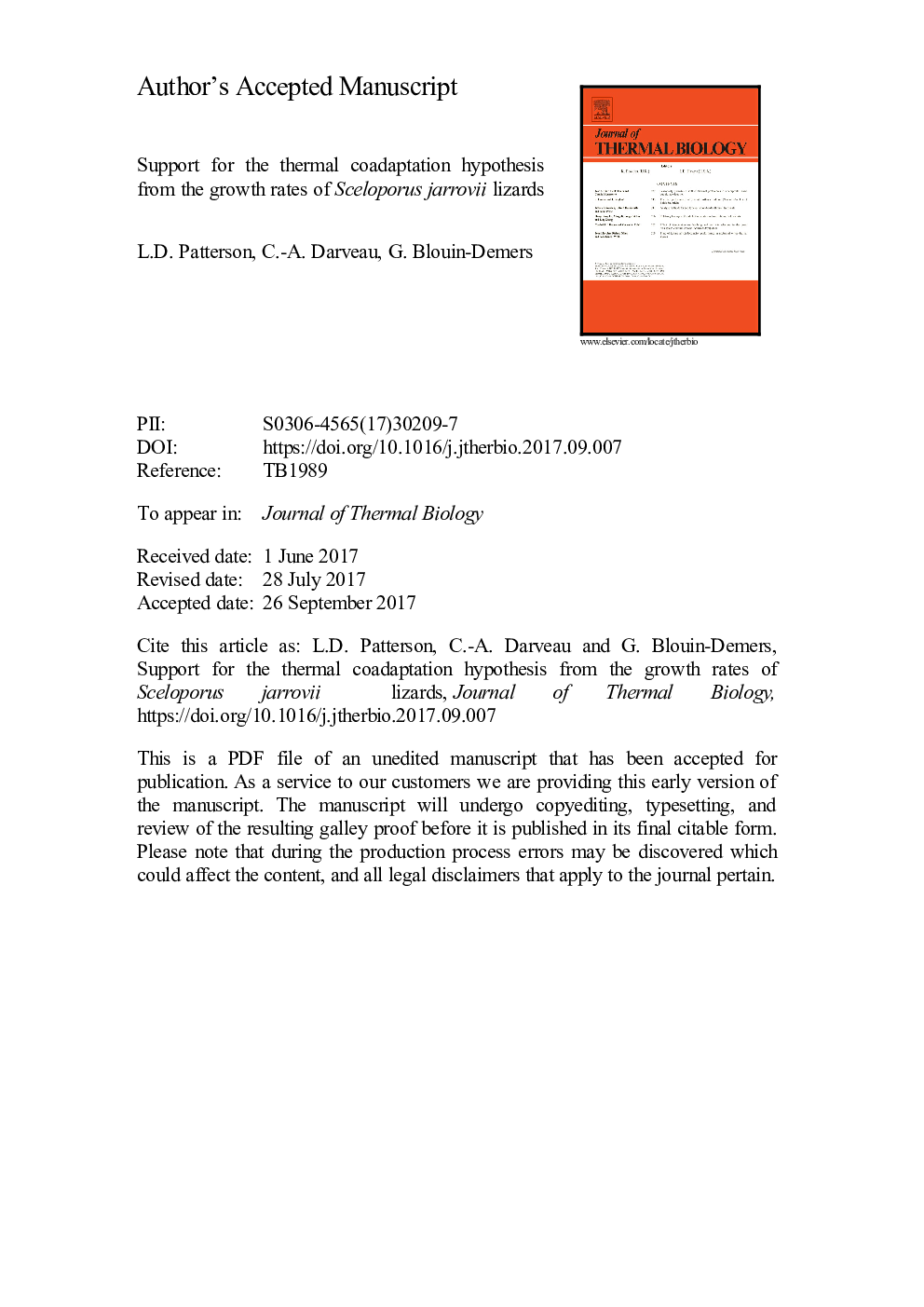| Article ID | Journal | Published Year | Pages | File Type |
|---|---|---|---|---|
| 8650177 | Journal of Thermal Biology | 2017 | 44 Pages |
Abstract
The thermal coadaptation hypothesis posits that ectotherms thermoregulate behaviorally to maintain body temperatures (Tb) that maximize performance, such as net energy gain. Huey's (1982) energetics model describes how food availability and Tb interact to affect net energy gain. We tested the thermal coadaptation hypothesis and Huey's energetics model with growth rates of juvenile Yarrow's spiny lizards (Sceloporus jarrovii). We compared the preferred (selected) Tb range (Tsel) of lizards in high and low energy states to their optimal temperature (To) for growth over nine weeks, and determined whether the To for growth depended on food availability. We also measured the same lizards' resting metabolic rate at five Tbs to test the energetics model assumptions that metabolic cost increases exponentially with Tb and does not differ between energy states. The Tsel of lizards on both diets overlapped with the To for growth. The assumptions of the energetics model were verified, but the To for net energy gain did not depend on food availability. Therefore, we found support for the thermal coadaptation hypothesis. We did not find support for the energetics model, but this may have been due to low statistical power.
Keywords
Related Topics
Life Sciences
Agricultural and Biological Sciences
Agricultural and Biological Sciences (General)
Authors
L.D. Patterson, C.-A. Darveau, G. Blouin-Demers,
